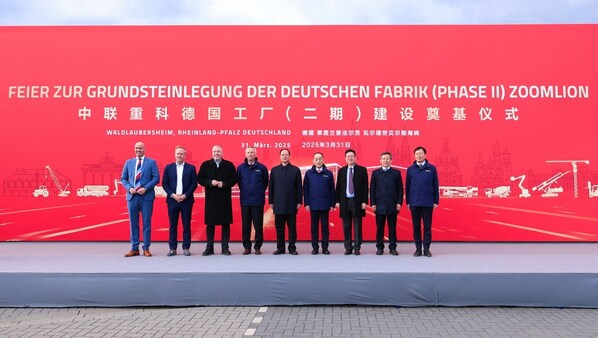
The Glasgow Climate Accord was adopted at the 26th Conference of the Parties (COP26) to the United Nations Framework Convention on Climate Change (UNFCCC) held in Glasgow in the UK. The accord incorporated efforts to limit the increase in global average temperatures by 2100 to within 1.5 degrees Celsius of pre-industrial levels. The most realistic way to achieve this is by advancing the transition to renewable energy sources.
Although renewable energy is sustainable, the amount of electricity that it generates is easily affected by natural conditions, so in order to ensure a stable supply of electricity, there is a need to adjust supply and demand by moving electricity in and out of rechargeable batteries. So how can we improve the efficiency and service life of battery systems to expand the roll-out of renewable energy and help it take root as public infrastructure? We spoke with Takahiro Yamamoto from the System AI Laboratory at Toshiba’s Corporate Research & Development Center, who is developing technology for monitoring battery systems.
COP26 Glasgow Climate Accord boosts demand for renewable energy and rechargeable batteries
“Rechargeable batteries used for electrical power and other public infrastructure can’t be thought of in the same way as something like a smartphone, where you can say ‘Well, the battery didn’t last a day, but never mind.’” Yamamoto explains.
Renewable energy is essential for achieving carbon neutrality, and rechargeable batteries will play an essential role in its widespread adoption. However, if they are not used properly, they will be discarded when they degrade, replacements will be manufactured and once again consumed, leading to an ever-increasing burden on the global environment.
“Renewable energy output is subject to large fluctuations due to weather conditions,” says Yamamoto. “When the supply and demand balance fluctuates in this way, current frequencies changes, and if that electricity is fed into the grid it will cause instability. It is important to have battery systems that adjust and stabilize the grid by feeding power in and out. However, production and installation of rechargeable batteries costs a lot of money, which has slowed the progress of their wider use. The ideal now is to inspect and maintain battery systems properly once they are installed, and to use batteries throughout their service life to the end, and keep costs down.
There are also a number of other challenges that need to be addressed, including methods of waste disposal and difficulties in procuring the lithium and other resources needed to produce the batteries. As Yamamoto explains, to overcome these challenges and accelerate the use of renewable energy, it is extremely important to maintain and inspect batteries to improve their efficiency and service life as a system. Maintenance and inspection sounds like a simple task, but it is a very delicate and complex process that requires a high level of technical expertise.
Rechargeable battery monitoring technology improves the efficiency and service life of battery systems
Toshiba is working on various battery systems that use SCiB™, a high performance rechargeable lithium-ion battery. It is also developing a number of monitoring technologies to detect degradation and malfunctions in rechargeable batteries. This is because monitoring allows the rechargeable batteries to be used to the full, for their entire service life, and maximizes the value of battery systems.
Monitoring battery systems requires the selection and combination of appropriate methods of assessment, in accordance with the measurement time available and the accuracy of the required measurements. For this reason, Toshiba has developed multiple monitoring technologies for all kinds of situations, and uses the state of health index (SoH) to evaluate the status of a battery’s capacity and internal resistance. Yamamoto explains the significance of SoH:
“Battery systems are built by combining a large number of battery cells in battery modules, and installing the modules in the system’s housing. Although we cannot extend each individual battery’s service life beyond the specification, but if we check the SoH of the overall system and find locally damaged components that need maintenance and inspection, we can take action before a particular battery module degrades too much, resulting in efficient use and a longer service life for the battery system as a whole.”
SoH evaluation is also the focus of interest in the reuse of rechargeable batteries, and companies in Japan’s automotive industry are keen to develop the technology. In the US, many startups are in the business of repurposing used automotive batteries as rechargeable batteries for power companies. In light of this situation, more than 100 companies and organizations, including Ford and Denso, are now in the process of establishing a “degradation monitoring index,” a standard for calculating the value of automotive batteries when they are reused.
Should battery system monitoring be an annual physical checkup or daily health management?
As a producer of battery systems, Toshiba also has various SoH estimation technologies. Of these, the Voltage Deviation Method, which Yamamoto works on, is particularly well-suited to evaluating the SoH of the battery systems used in electric power grids. The advantage of this method is that even when a large number of battery cells are combined in a system, each battery module can be evaluated individually.
Yamamoto explains how it differs from other approaches: “Some monitoring technologies involve shutting down the battery system temporarily and assessing SoH by applying a test current to check capacity and internal resistance. This is an approach that involves regular maintenance, regardless of whether or not there is a malfunction, akin to having an annual physical checkup. By contrast, the Voltage Deviation Method determines SoH from data obtained under operating conditions. This approach involves monitoring operating data from machines and equipment, analyzing it and performing maintenance. We can say it is like a wearable device that analyzes your daily physical condition and detects signs of illness.”

The reason for the development of the Voltage Deviation Method was feedback from divisions working with renewable energy. “Battery systems used in the power grid are regarded as infrastructure,” explains Yamamoto. They operate 24 hours a day, 365 days a year. One day, a person working with these systems said to me, ‘We can’t shut down infrastructure. What we want is a technology that allows us to evaluate data during operation.’ That’s when we started serious research.”
So what exactly is the mechanism for evaluating SoH? Simply put, “SoH is estimated by statistically calculating the feature* of voltage values using charge/discharge data taken from battery systems while they are operating.” We asked Yamamoto for a few more details
*Feature: An individual measurable property or characteristic of a phenomenon being observed. Choosing informative, discriminating and independent features is a crucial element of effective algorithms in pattern recognition, classification and regression.
“First, we prepared several degraded rechargeable batteries and conducted various experiments simulating actual conditions, such as temperature and charge/discharge patterns, and acquired data corresponding to SoH. We stored this experimental data in a database as ‘training data.’
“In the next step, we derived a reference function from the training data by linking its features to SoH. This is then compared to the features drawn from the actual operating data of a battery system, giving SoH as an output. Then we monitor any changes in this SoH.”
The technology was made possible by Toshiba’s AI and the huge amounts of data held by its Battery Division. Toshiba deals in many types of rechargeable batteries, including SCiB™, and it possesses a large amount of evaluation data from rechargeable batteries that have been degraded under a range of conditions during the development process. The “training database” is built by making use of rechargeable batteries with known degradation conditions.





.png)

































.jpg)








%20(1).jpg)







.jpg)































.png)















